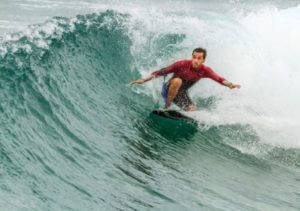SAN DIEGO — Mastering the menacing waves of the Pacific Ocean is no easy chore for surfers. Thankfully, science and surf collaborated and a new study identifies how to pinpoint a wave’s “sweet spot” when trying to hang ten.
Researchers at the Scripps Institution of Oceanography at the University of California sought to figure out how to find the most forceful part of a wave — the area that will most efficiently propel the surfer forward. The experiment, however, was intended to aid meteorologists and other climate scientists studying weather and climate models, despite lead researcher Nick Pizzo being an avid surfer.

“By studying the acceleration of a theoretical surfer on a wave, we can provide a better description of the currents generated by breaking waves, leading to an improved understanding of the momentum and energy budget between the atmosphere and ocean,” says Pizzo in a press release.
The researchers were interested in the water exchanges between the ocean and the atmosphere due to such breaking waves. They observed upper ocean processes for both shallow-water and deep-water waves. When waves break onto the surface of the water, ocean spray is launched up into the atmosphere.
“Based upon the speed and geometry of the wave, you can determine the conditions to surf a wave and also where on the wave the maximum acceleration, or ‘sweet spot,’ will be located,” says Pizzo.
Pizzo says that location can be found right inside the curl of the breaking wave.
Although it may seem insignificant, these studies help to measure large-scale climate patterns. Research on breaking waves is being used to determine weather changes and climate stability.
“We need to understand the little things to get the big picture,” concludes Pizzo.
The findings were published in the last issue of the Journal of Fluid Mechanics. The research received support from the National Science Foundation and the Office of Naval Research.
